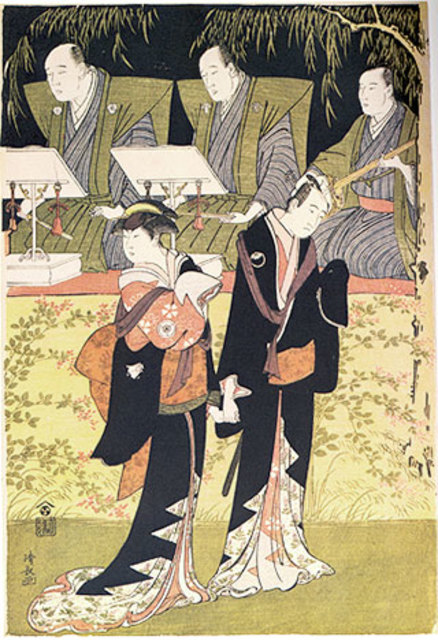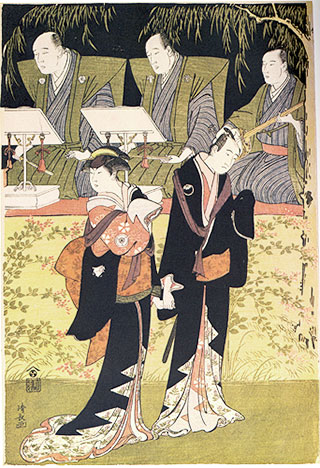Title: Untitled (Part of degatari-zu Series) Artist: Torii Kiyonaga Period: Edo period (1615–1868) Date: 1784-1788 Medium: Woodblock print; ink and color on paper Dimensions: 12 5/8 x 8 3/4 in. (32.1 x 22.2 cm)

Full description
This woodblock print by Torii Kiyonaga features a Michiyuki walk being performed in a theater by actors in a kabuki play. This print is part of a subgenre of prints called degatari-zu pictures of narrators appearance. The michiyuki walk in theaters were often the highlight reel of the couple's lives. Theatrical tales of regret, sorrow and self realization and awareness weaved together to create ordinary people into heroines and heroes for dying in what they believed in. Oftentimes these plays would be so emotionally charged viewers and actors alike would become inspired to commit shinju. This Led to shinju related works being heavily securitized and regulated by the shogunate. In addition, allegorical references to depression and death are left in the background such as the bush clover by the stage while the main focus would be on the actors and their performances which were often highly romanticized retellings of shinju stories.
Comments
to view and add comments.
Annotations
No one has annotated a text with this resource yet.


